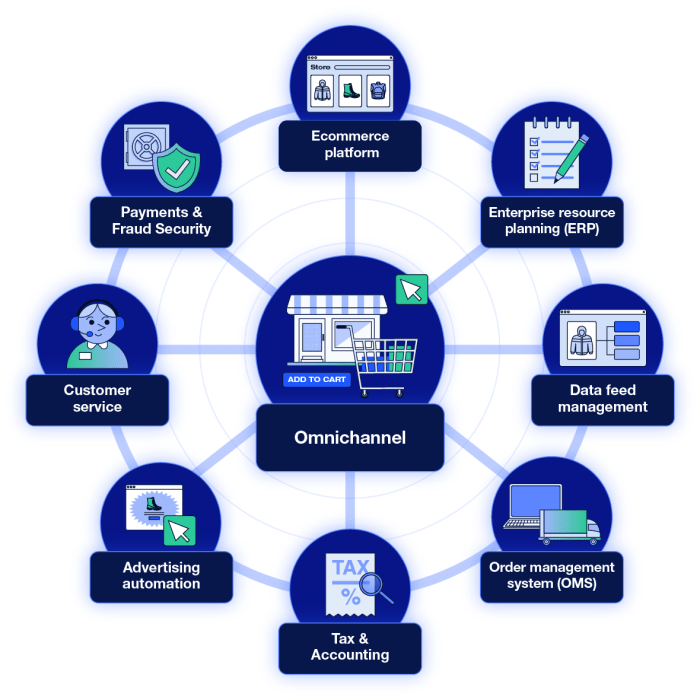Kicking off with Developing an Omnichannel Marketing Strategy, this opening paragraph is designed to captivate and engage the readers, setting the tone american high school hip style that unfolds with each word.
In a world where connectivity is key, businesses need to adapt to the omnichannel approach to meet customer expectations and stay ahead of the competition. From social media to physical stores, creating a seamless experience across all touchpoints is the name of the game.
Importance of Omnichannel Marketing Strategy
Having an omnichannel marketing strategy is essential for businesses in today’s digital landscape. It allows companies to seamlessly integrate their online and offline channels to create a unified customer experience.
Enhancing Customer Experience
An omnichannel approach enhances the customer experience by providing a consistent and cohesive journey across all touchpoints. Customers can interact with the brand through various channels, such as social media, websites, physical stores, and mobile apps, leading to a more personalized and engaging experience.
- Customers can start their shopping journey online, research products, and then seamlessly transition to a physical store to make a purchase.
- Personalized recommendations based on past interactions and purchase history can be provided across different channels, increasing customer satisfaction and loyalty.
- Integration of customer data allows for a holistic view of the customer, enabling businesses to tailor their marketing efforts accordingly.
Examples of Successful Companies
Many successful companies have implemented effective omnichannel strategies to drive growth and enhance customer loyalty.
Starbucks
is a prime example of a company that has successfully implemented an omnichannel strategy. Customers can order through the mobile app, website, in-store, or even through voice ordering, creating a seamless experience across channels.
Disney
is another company that excels in omnichannel marketing. They provide a consistent brand experience across their theme parks, retail stores, website, and mobile app, ensuring that customers feel connected to the magic of Disney no matter where they interact with the brand.
Components of an Omnichannel Marketing Strategy
In order to create an effective omnichannel marketing strategy, it is important to understand the key components that make up this approach. By integrating various channels such as social media, email, and physical stores, businesses can provide a seamless customer experience that enhances engagement and drives sales. Additionally, leveraging data analytics plays a crucial role in optimizing an omnichannel strategy by providing insights into consumer behavior and preferences.
Integrating Various Channels
- Utilizing social media platforms to engage with customers and build brand awareness across different channels.
- Sending personalized emails to target specific customer segments and drive them to make purchases both online and in-store.
- Creating a unified customer experience by integrating online and physical stores, allowing for seamless shopping transitions.
Role of Data Analytics
- Collecting and analyzing customer data to gain insights into shopping behaviors, preferences, and trends.
- Utilizing data to create targeted marketing campaigns that resonate with specific customer segments.
- Tracking and measuring the effectiveness of omnichannel strategies to make data-driven decisions for continuous improvement.
Challenges in Developing an Omnichannel Marketing Strategy

Implementing an omnichannel marketing strategy can be a complex process for businesses, as it involves integrating various channels seamlessly to create a cohesive customer experience. Here are some common challenges faced by businesses when developing an omnichannel marketing strategy and how to overcome them:
1. Siloed Data and Systems
One of the biggest challenges in omnichannel marketing is the presence of siloed data and systems. When customer data is stored in different systems that don’t communicate with each other, it can be difficult to provide a unified experience across all channels.
- Implement a centralized customer data platform to consolidate and integrate data from various sources.
- Use customer relationship management (CRM) tools to track customer interactions and preferences across channels.
- Invest in technology that enables real-time data sharing and synchronization between systems.
2. Consistent Brand Messaging
Another challenge is maintaining consistent brand messaging across all channels. Inconsistencies in messaging can confuse customers and dilute the brand identity.
- Develop a comprehensive brand style guide that Artikels messaging guidelines for all channels.
- Train employees across different departments on brand voice and messaging standards.
- Regularly audit and update content to ensure consistency across channels.
3. Lack of Cross-Channel Integration, Developing an Omnichannel Marketing Strategy
Ensuring seamless integration between online and offline channels is essential for a successful omnichannel strategy. Lack of integration can result in disjointed customer experiences and missed opportunities for engagement.
- Offer consistent promotions and discounts across all channels to encourage cross-channel shopping.
- Implement technologies like beacon technology or geotargeting to bridge the gap between online and offline channels.
- Create personalized experiences that follow customers across channels based on their preferences and behavior.
Successful Examples
Starbucks
Starbucks has successfully implemented an omnichannel strategy by allowing customers to order and pay through their mobile app, website, or in-store, creating a seamless experience across channels.
Disney
Disney has integrated its theme parks, online store, and social media channels to provide a consistent brand experience, allowing customers to engage with the brand in multiple ways.
Best Practices for Implementing an Omnichannel Marketing Strategy

Implementing an effective omnichannel marketing strategy requires careful planning and execution to ensure consistent messaging, branding, and customer experience across all channels. Here are some best practices to consider:
Align Messaging, Branding, and Customer Experience
- Ensure that your brand messaging is consistent across all channels to avoid confusing customers.
- Align your branding elements, such as logos, colors, and fonts, to create a cohesive brand identity.
- Create a seamless customer experience by providing consistent service and support across all touchpoints.
Continuous Monitoring and Adaptation
- Regularly monitor the performance of your omnichannel strategy to identify areas for improvement.
- Use analytics and data to track customer interactions and behavior across different channels.
- Be prepared to adapt your strategy based on customer feedback and market trends to stay relevant and competitive.





